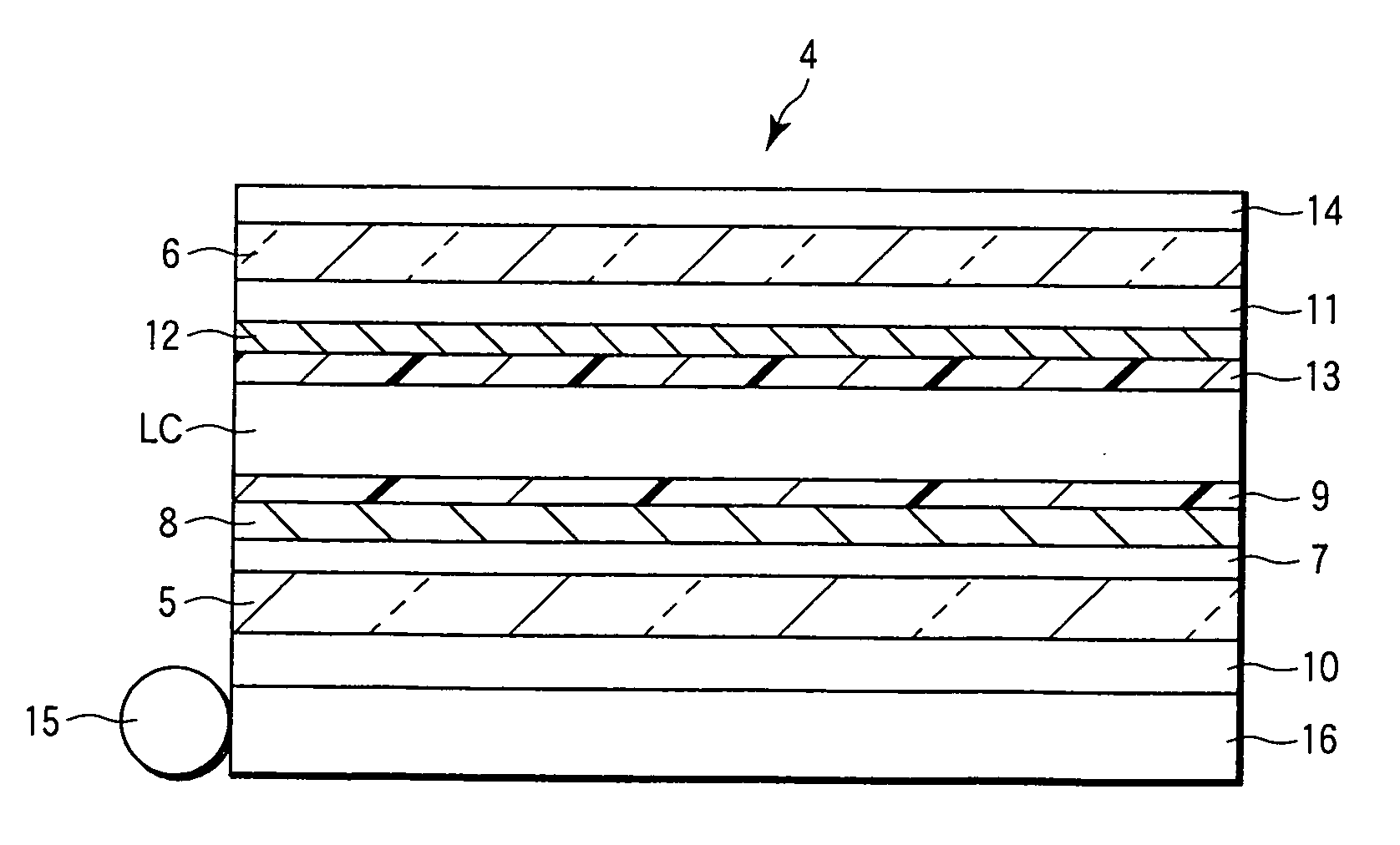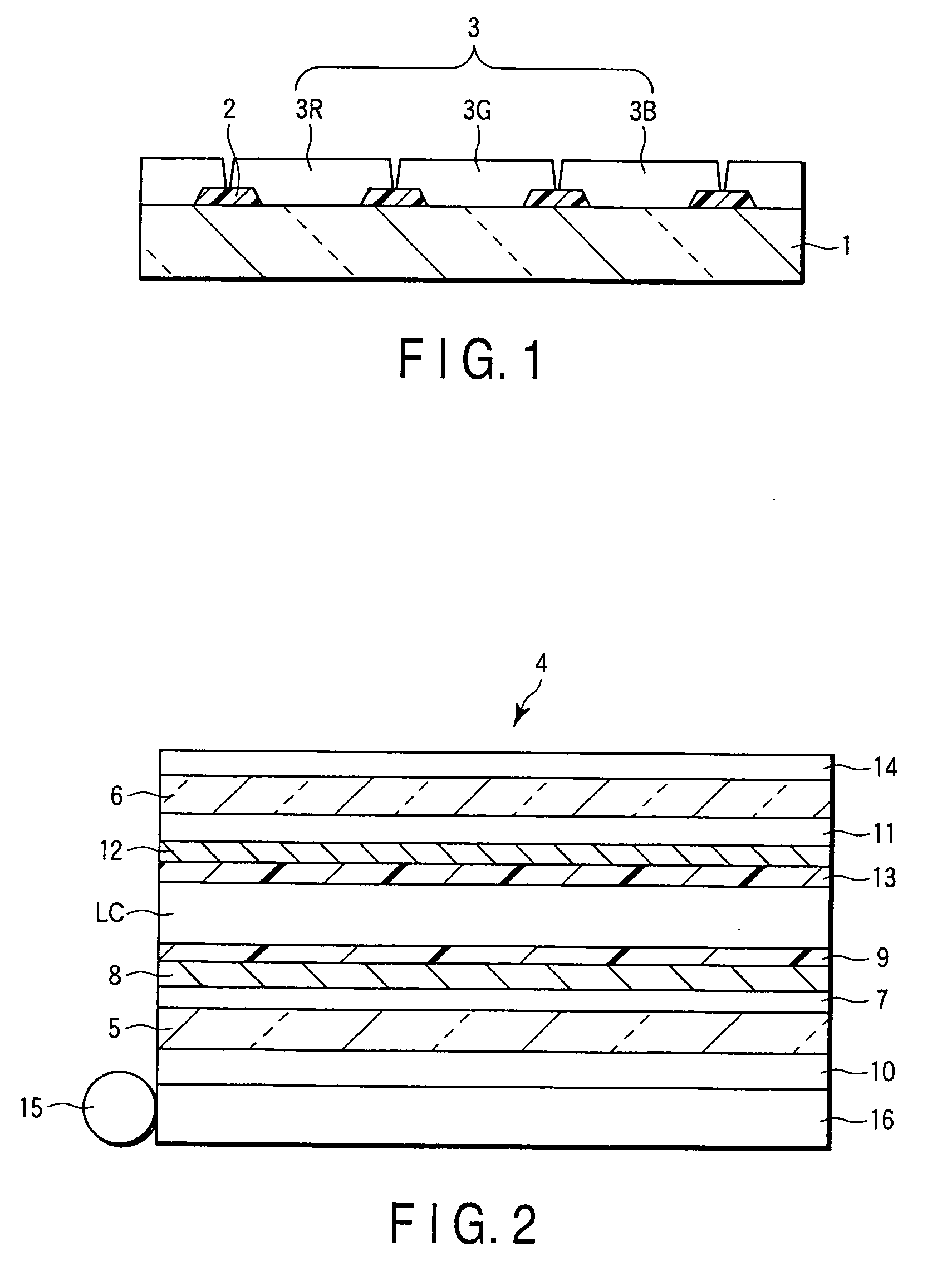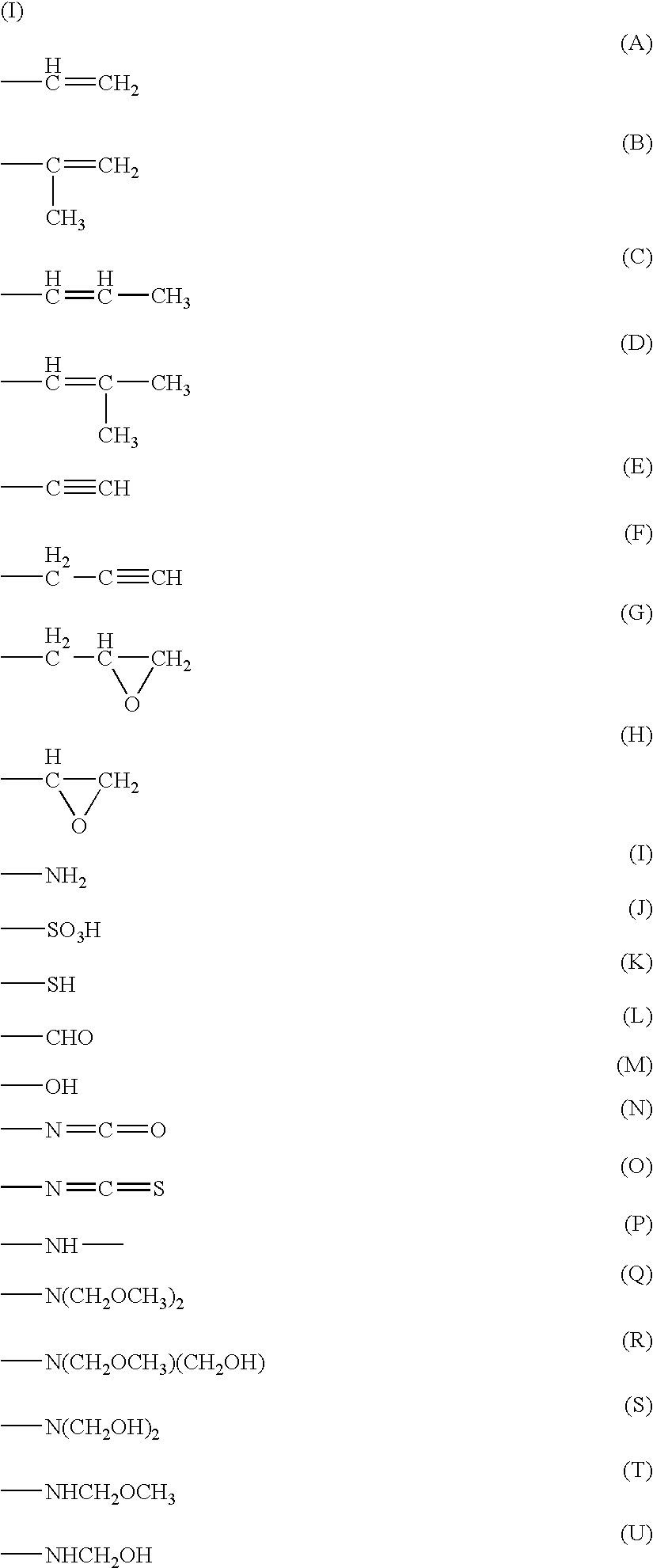Color filter and liquid crystal display device
a liquid crystal display device and color filter technology, applied in the direction of optical filters, optics, instruments, etc., can solve the problems of deteriorating display quality, coloring is caused to generate, and the negative perpendicular optical retardation cannot be completely compensated by the optical compensating layer
- Summary
- Abstract
- Description
- Claims
- Application Information
AI Technical Summary
Benefits of technology
Problems solved by technology
Method used
Image
Examples
manufacturing example 1
[0192]100 parts (based on weight, the same hereinafter) of an anthraquinone-based red pigment PR177 (Ciba Speciality Chemicals Co., Ltd. “CROMOPHTAL RED A2B”), 8 parts of a coloring material derivative (D-2), 700 parts of pulverized sodium chloride, and 180 parts of diethylene glycol were put into a 1 gallon stainless steel kneader (Inoue Seisakusho Co., Ltd.) and kneaded for 4 hours at a temperature of 70° C.
[0193]Then, the resultant mixture was introduced into 4000 parts of hot water and stirred for about one hour by means of a high-speed mixer while heating it at a temperature of about 80° C. to obtain a slurry. This slurry was then repeatedly subjected to filtration and water washing to remove sodium chloride and solvent, and was dried for 24 hours at a temperature of 80° C. to obtain 102 parts of a salt milling-treated pigment (R-1). The primary particle diameter of the pigment thus obtained is shown in the following Table 2.
manufacturing example 2
[0194]170 parts of tert-amyl alcohol was poured into a sulfonation flask in a nitrogen atmosphere and then 11.04 parts of sodium was added to the tert-amyl alcohol to obtain a mixture which was then heated at a temperature of 92-102° C. to melt the sodium. While vigorously stirring the molten sodium, the mixture was kept overnight at a temperature of 100-107° C. Then, a solution containing 44.2 parts of 4-chlorobenzonitrile and 37.2 parts of diisopropyl succinate, which were dissolved in advance at 80° C. in 50 parts of tert-amyl alcohol, was slowly added to the aforementioned mixture over two hours at a temperature of 80-98° C. Then, the resultant reaction mixture was further stirred for three hours at 80° C., and concurrently 4.88 parts of diisopropyl succinate was added dropwise to the reaction mixture. This reaction mixture was cooled to room temperature and then 270 parts of methanol, 200 parts of water and 48.1 parts of concentrated sulfuric acid were added to this reaction mi...
manufacturing example 3
[0195]120 parts of copper phthalocyanine halide-based green pigment PG36 (Toyo Ink Manufacturing Co., Ltd. “LIONOL GREEN 6YK”), 1600 parts of pulverized sodium chloride, and 270 parts of diethylene glycol were put into a 1 gallon stainless steel kneader (Inoue Seisakusho Co., Ltd.) and kneaded for 12 hours at a temperature of 70° C. Then, the resultant mixture was introduced into 5000 parts of hot water and stirred for about one hour by means of a high-speed mixer while heating it at a temperature of about 70° C. to obtain a slurry. This slurry was then subjected to repeated filtration and water washing to remove sodium chloride, and the solvent was dried for 24 hours at a temperature of 80° C. to obtain 117 parts of a salt milling-treated pigment (G-1). The primary particle diameter of the pigment thus obtained is shown in the following Table 2.
PUM
 Login to View More
Login to View More Abstract
Description
Claims
Application Information
 Login to View More
Login to View More - R&D
- Intellectual Property
- Life Sciences
- Materials
- Tech Scout
- Unparalleled Data Quality
- Higher Quality Content
- 60% Fewer Hallucinations
Browse by: Latest US Patents, China's latest patents, Technical Efficacy Thesaurus, Application Domain, Technology Topic, Popular Technical Reports.
© 2025 PatSnap. All rights reserved.Legal|Privacy policy|Modern Slavery Act Transparency Statement|Sitemap|About US| Contact US: help@patsnap.com



